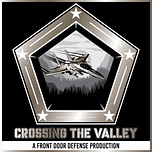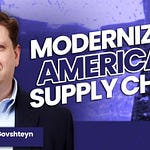About Vannevar Labs
Vannevar Labs is building the next-generation “non-kinetic defense prime.”
Today, they're mentioned in the same breath as defense behemoths like Anduril and Palantir. Since founding the company in their Stanford dorm room in 2019, CEO Brett Granberg and President Nini Hamrick have grown the company dramatically. From $3.5 million in annual contract value in 2021, they did $25 million in 2022, before growing to $49 million last year.
What's even more crazy is, unlike most of their peers, they're already profitable. Brett and Nini know that defense modernization is not a fight that's going to be won by one company alone.
And so they're investing in the ecosystem.
Brett’s piece on “How to Invent Defense Products,” and Nini’s article on “How to land and convert your first defense pilots” are touchstone works helping up-and-coming founders navigate the notoriously treacherous terrain of defense sales.
What follows are some of the most insightful takeaways from our conversation:
How do you find a government champion? What do they look like?
A champion is “the person in the room that's really ambitious.” They want to solve problems and they aren’t satisfied with their organization’s pace, depth of operations because they understand the broader strategic environment and what’s at stake.
“There are pockets of these people throughout government, whether they're program managers or O-6s on the DoD side, or users who really want to be building future looking capabilities and really are hungry for teams like ours to partner with.”
“And you can you can always spot them in a meeting. They're the one who is getting really specific with you about what they're working on and the parts that are unsolved. And once you have won their trust…after you've proved that what you're doing is actually going to make a meaningful dent on their mission, they're the ones pulling you into the next operation they're planning, or the next set of operations they're planning that you can you can meaningfully impact. Those have been our best champions. And the magic is really also when you start to tie those people together.”
“If you had to summarize, maybe 70% of our go-to-market, it's just finding those people, just finding the really sharp ambitious, mission-motivated and effective people (O-5 to O-6 typically), and then the program manager side [to match].”
How do you get users to start using your tools?
“We use something called a vendor demonstration agreement, which we learned from John Doyle, who was on our board and used to run Palantir's intelligence business. A VDAs is a legal document that program offices usually are familiar with and they're comfortable with signing.
It's a little bit flexible in terms of how many accounts you can allocate and how long the VDA can be. But that construct, once we learned how to do that, us in our early go to market.”
The VDAs have been a little bit lower friction than traditional CRADAs, and have been a game-changer for letting users touch, feel, provide real-time feedback on software.
How do you get Program Managers to care about what you’re doing?
Program manager are “building really large capability sets. They're thinking about future looking requirements. And we want to have done a lot of work on our end of understanding the capabilities they've already deployed in that program and what they're trying to do next, such that we have some sort of hypothesis that we can start iterating on with them around where the capabilities we've already deployed with user groups that they care about start to integrate into that overall vision.”
“The mistake that we made early and took a while to figure out, and we're still figuring out to be honest, is you can produce many, many mission outcomes with users that get people very, very stoked … but you have to find those points of intersection between what you're building and what they're building.”
“I think the mistake is just thinking people are going to care because great things are being produced from your pilot. And you really have to do the work to help yourselves and eventually the program managers imagine how this fits into that broader vision, a broader vision that you didn't create.”
Should you build one product or multiple products?
“We always knew that as a defense company, we would have to be multi-product.
In order to earn the right to do that, though, you have to build, you know, like one product, you have to start somewhere, you got to start like one product that people actually want to buy and it solves the problem and generates revenue.
Once it became clear to us that Decrypt was probably going to transition, we then started looking at other missions. So we've made a bunch of product bets. I think we probably have, 4 maybe that I would say are in the realm of product market fit. But we've made probably 8 bets, or maybe even a little bit more. And so not every one wins - and that’s okay. Just the trick is like double down on the things that work and kill the ones that don't.”
How do you reorganize the company to go after programs rather than pilots?"
“From a company standpoint, you have to organize the company differently when you're going after programs.
You have to think about how you embed product people and engineers on deal teams and program teams a little bit differently. You have to think about product development a little bit differently. Certainly, sales, government relations, how you deal with program offices, getting into the POM process.
There's a totally different set of skills and tools you need to transition from the UFR playbook to this big program playbook. And it is absolutely fundamental that we figure that out for the success of the company.
In addition to thinking about the program pipeline that you have, you also need to think about the product pipeline that you have. Do you have the pipeline of products that supports think are going to be big enough that you'll hit that revenue base. And that requires you to think because of the time it takes for products to hit scale and hit product market fit. You have to think about that. If you need a certain product pipeline in 2027, 2028, you need to be thinking about that now. And so I spent a decent amount of time thinking about that and thinking about, okay, how do we set up the engineering and product teams to go like, But as our product portfolio increases, how do you take that and tie that into sales?”
What are we going to see from Vannevar in the years ahead?
“On the product side, you have people that are owning a large mission space and we're going after multiple of those.
On the mission side, what you think of as the people selling the product…we're also deploying the product. We have opportunities to own and build large programs with the DoD. And so I think it's unusual when you're looking at a company like Vannevar, any growth stage defense company versus an equivalent on the commercial side, in terms of the level of really high ownership and really high autonomy that's possible for us.
And I think not just possible, but that's who we select for. And we look for low ego and grit and really intense mission drive, because those are the types of people that that succeed when you give them that level of ownership and autonomy to go either build new products or build new programs.”
Timestamps
00:00:00-00:00:34 - Introduction to Vannevar Labs
00:00:34-00:01:50 - Founding Story
00:04:22-00:05:55 - Reactions to Starting a Defense Tech Company
00:09:29-00:11:55 - Building Trust with Customers
00:13:17-00:17:41 - Selecting and Working with Champions
00:26:30-00:28:51 - Transitioning to Larger Programs
00:36:30-00:39:58 - Future Plans and Growth of Vannevar Labs
00:40:09-00:45:50 - Talent and Hiring at Vannevar Labs
Key Quotes
"The advantage of our company is we should never have that happen again. We should be the team or one of the teams." - 00:33:27-00:33:37
"The best leaders in defense that I've seen at Anduril, Palantir…and Vannevar all are a little bit cross-functional." - 00:41:47-00:41:58
"Ego is the enemy of learning. And in a startup, especially one that you're still figuring out how to do things, you need to be as oriented towards learning as possible." - 00:42:41-00:42:51
"We're going to keep doing... Our pace of new product development is accelerating, not decelerating." - 00:39:13-00:39:24
"The trick is like double down on the things that work and kill the ones that don't." - 00:30:00-00:30:10
"You have to think about how you embed product people and engineers on deal teams and program teams a little bit differently." - 00:37:25-00:37:35
"We select for people that are irrationally obsessed about the mission and therefore just are really good at their jobs." - 00:43:03-00:43:14













Season 2 Ep 4: Vannevar Labs is Changing the Defense Tech Paradigm